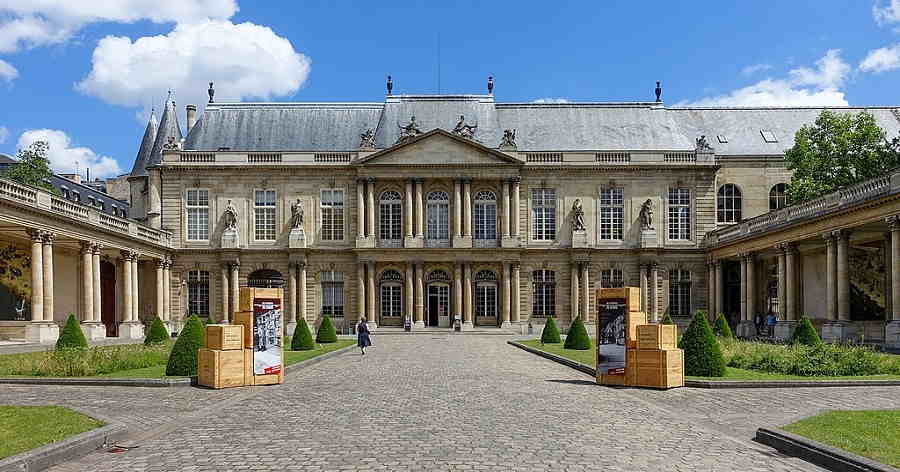
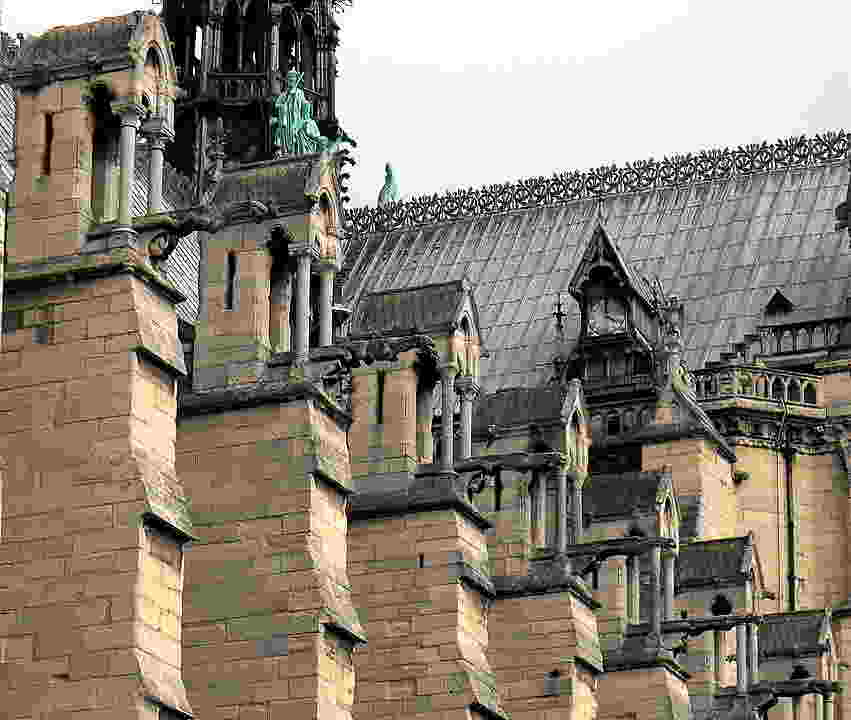
Notre-Dame de Paris is one of the most iconic and well-known historic buildings in Paris. Located on the Île de la Cité, the cathedral has stood tall since the 12th century and has endured a long and storied history. Notre-Dame is a Gothic masterpiece, with its two towers standing nearly two hundred feet tall and its great rose window of stained glass. Its interior is breathtaking, with three levels of interior galleries featuring intricate carvings and sculptures. Its flying buttresses, which support the structure, are especially impressive. The cathedral is a popular tourist destination, drawing millions of people every year. It is also a place of worship and has been used as a backdrop for many important events in French history, including the coronation of Napoleon and the burial of former French presidents. Notre-Dame is an important symbol for the city of Paris, and its importance is recognized around the world. It was declared a UNESCO World Heritage Site in 1991, and in 2019 it was the focus of an international restoration effort after a devastating fire.
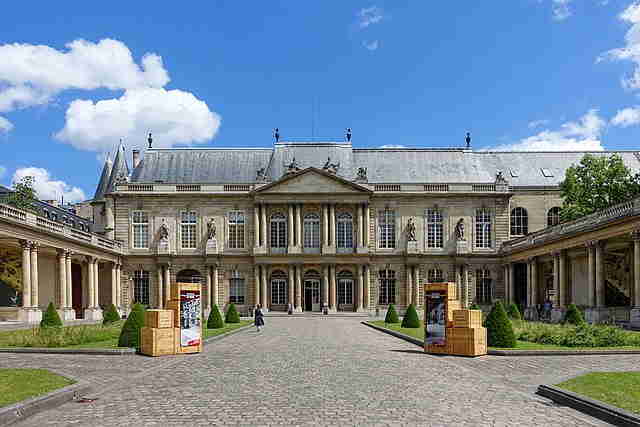
Hôtel de Soubise is a historic building located in the Marais district of Paris. Built in the 18th century, this elegant structure is a prime example of French Rococo style and has played a significant role in the country's cultural and political history. The building has a unique style, mixing elements of traditional 17th century French architecture with some Baroque elements. The exterior of the building is adorned with intricate carvings and sculptures, while the interior features luxurious gilded woodwork and lavish ceilings. The building was originally constructed for the Duke and Duchess of Soubise, a prominent French noble family. The building was eventually transformed into a museum in the late 19th century, and it now houses some of the most important collections of French art and culture.
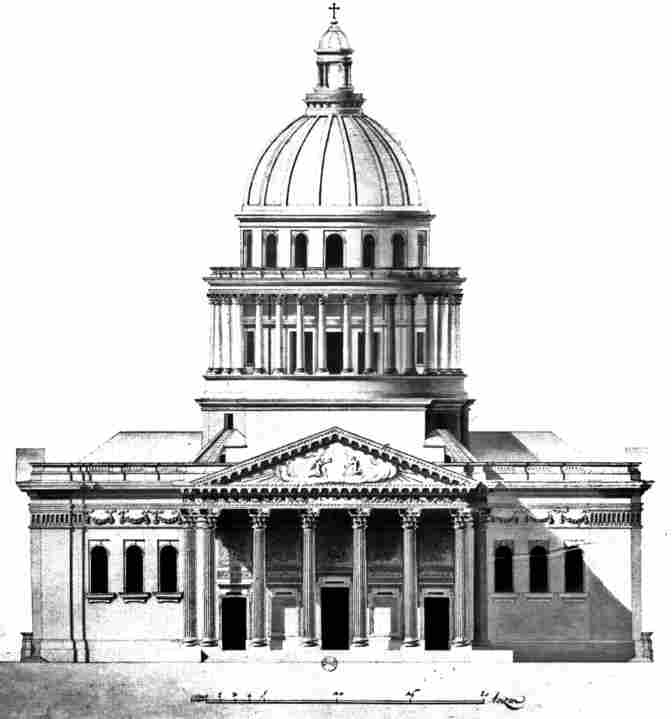
The Pantheon is a historic building located in the heart of Paris, France. It was originally built in 1758 as a church, dedicated to St. Genevieve, the patron saint of Paris. However, it was later transformed into a secular mausoleum to house the remains of the greatest French citizens. The Pantheon is an impressive structure, standing at over 180 feet tall. It is a neoclassical building, with its façade consisting of a large portico with three arches. The interior of the building is just as impressive, with its impressive dome and intricate marble flooring. It is also home to several famous sculptures, including the tomb of the great French writer, Voltaire.
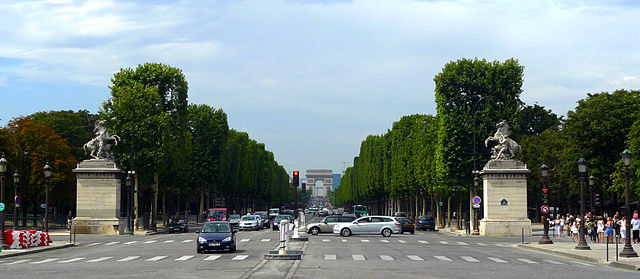
The Arc de Triomphe is one of the most iconic and recognizable historic buildings in Paris, France. Located at the western end of the Champs-Élysées, it stands as a grand archway that commemorates those who fought and died for France in the French Revolution and Napoleonic Wars. The Arc was commissioned by Napoleon in 1806, in honour of his victories in Europe. Construction began in 1806, and it was completed in 1836. The design of the Arc de Triomphe was inspired by Roman victory arches, and it stands 50 meters high and 45 meters wide. It is adorned with reliefs and sculptures depicting scenes from the wars and French history. The Arc de Triomphe is an important part of the history of Paris. It has served as a rallying point for French citizens during military parades and other celebrations. It also has been the site of funerals of famous French figures such as Charles de Gaulle, who was buried beneath the Arc in 1970.
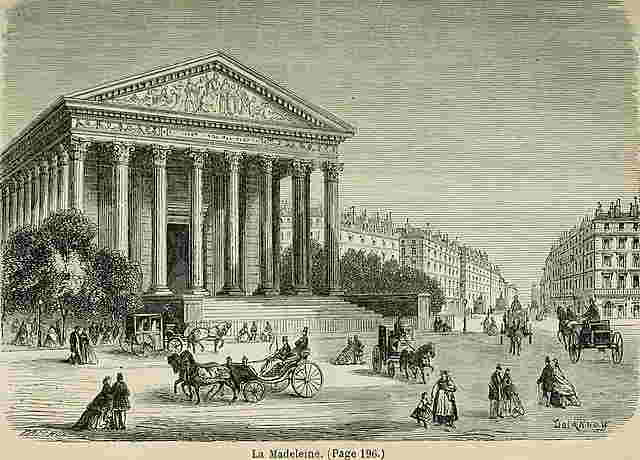
La Madeleine is a historic building located in the 8th arrondissement of Paris, France. It stands at the northern end of the famous Rue de la Madeleine, a street named after the church. La Madeleine is a Roman Catholic church and a former royal chapel that was constructed in the early 19th century. La Madeleine is a masterpiece of neoclassical architecture, with its tall columns and ornate façade. The construction of La Madeleine began in 1806 under the direction of Napoleon Bonaparte, and was completed in 1842. The building is dedicated to Mary Magdalene, and the exterior is modeled after a Greco-Roman temple. La Madeleine is one of the most recognizable and iconic buildings in Paris, with its impressive façade of Corinthian columns and its massive dome. The interior of the church contains a number of historical artifacts, including a large marble altar and a grand organ. The marble altar was donated by Napoleon Bonaparte himself, and is decorated with bronze and marble sculptures. The organ was built in 1845 and is one of the largest in Europe. La Madeleine is a symbol of French history and culture, and has been featured in numerous films and photographs.
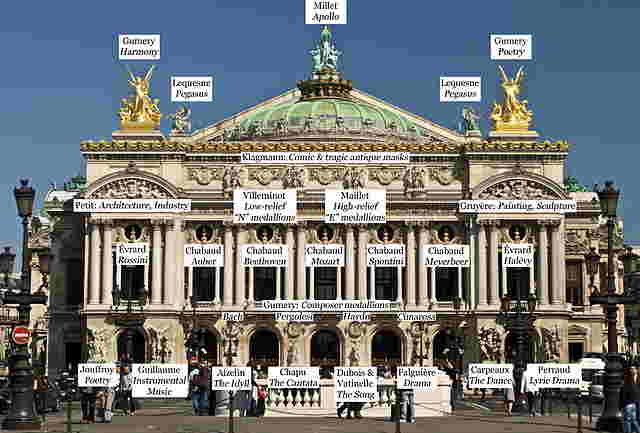
Palais Garnier is one of the most iconic historic buildings in Paris. Built from 1861 to 1875, it was designed by architect Charles Garnier in the Second Empire style. Located in the 8th arrondissement, it has become a symbol of the City of Light. The building was originally designed to serve as the home of the Paris Opera, and it is still used for performances today. It is a stunning example of the 19th century French architecture and design, and it is adorned with sculptures, reliefs and ornaments. The building is a masterpiece of the Second Empire style, featuring Corinthian columns, curved pediments, intricate detailing, and grand staircases. The Palais Garnier is well known for its opulence and grandeur, with its lofty ceilings and grand staircase. It features some of the most impressive and elaborate interiors in Paris. The Grand Foyer is a large hall with marble floors, gilded walls and ceiling, and a stunning painted ceiling by Chagall. The auditorium is also a sight to behold, with its ornate balconies, gold-leafed boxes and statues, and frescoes. The Palais Garnier is a stunning example of the Second Empire style and its beautiful interiors are sure to take your breath away.
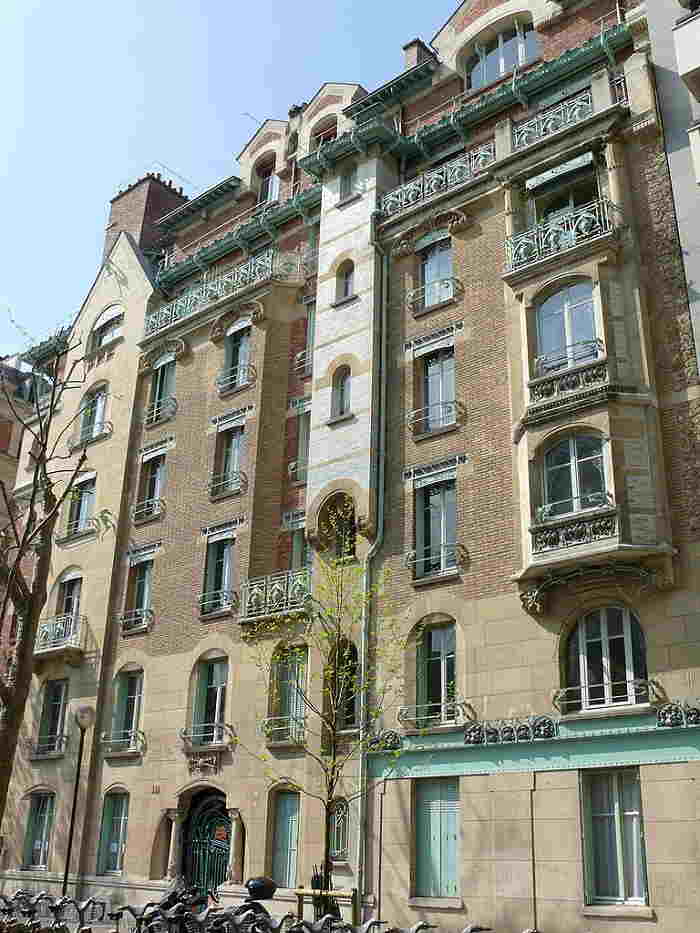
Castel Béranger is one of the most iconic historic buildings in Paris. Located in the 6th arrondissement, this impressive structure stands proudly on the corner of the Rue de l'Université and the Rue de Vaugirard. Built by the renowned Parisian architect Hector Guimard in the Belle Époque style, Castel Béranger was completed in 1898 and was the first Art Nouveau building to be constructed in Paris. The building is noted for its exquisite design that features curved balconies with wrought iron railings, decorative sculptures, and colorful tile work. The building is composed of five floors, with two circular corner towers. Above the entrance on the ground floor, there is a sculpted frieze of a mythical creature. The upper floors feature intricate stained glass windows, and the roof of the building is covered with colorful ceramic tiles. The interior of the building is just as impressive as the exterior. The main entrance hall is decorated with an elaborate wooden staircase, and the apartment interiors feature high ceilings, intricate plasterwork, and stained glass windows. Castel Béranger is an iconic example of the beauty and craftsmanship of the Belle Époque style.
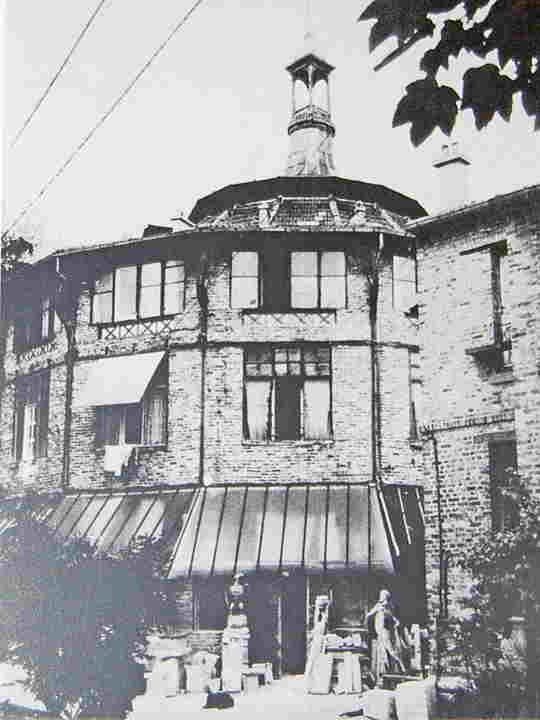
La Ruche studios are located in the 15th arrondissement of Paris, France and were built in 1902. Designed by architect Alfred Boucher, they are known for their distinctive honeycomb-like structure and is considered one of the most iconic buildings in the city. The building was originally built to house the prominent sculptor and artist, Alfred Boucher and his family. Boucher was a renowned artist who was part of the Symbolist Movement, which emphasized the power of imagination and emotion in art. La Ruche is divided into twenty-two studios that are spread over four levels, and the building is surrounded by a beautiful garden. Today, La Ruche is home to many artists and creatives from around the world, and it is considered a safe haven for the creative community.
Rue Franklin is an historic apartment building located in the 8th arrondissement of Paris, France. It is situated on the corner of Boulevard Haussmann and Rue Franklin, just a few blocks from the renowned Champs-Elysees. The building is a classic example of the Haussmann style of architecture, which was popular during the late 19th century. The building is distinguished by its large, ornate facade with columns, intricate detailing, and an ornate mansard roof. It was designed by the architect Charles Garnier, who was also responsible for the design of the renowned Paris Opera House. The interior of the building is equally as impressive as the exterior, with high ceilings and period features such as parquet flooring, ornate mouldings, and intricate fireplaces.
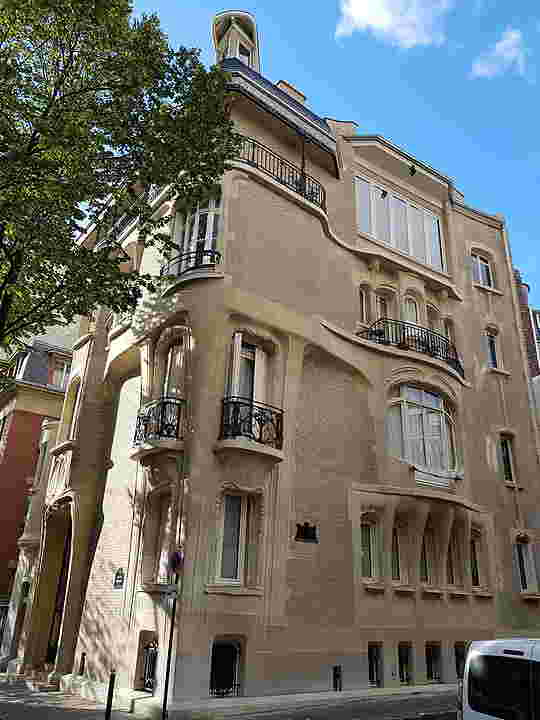
Hôtel Guimard is one of the most iconic and renowned historic buildings in Paris. Located on the Avenue Mozart in the 16th arrondissement, the building was designed by French architect Hector Guimard in the Art Nouveau style for the French industrialist Henri Sauvage in 1912. It is one of the most iconic examples of the architecture of the Belle Epoque era in the city, with its intricate and ornamental façade and curved balconies. The building was designed to be a luxurious apartment building, with Sauvage himself occupying the top floor. The structure is composed of two six-story wings connected by a curved central section, which is adorned with green glazed tiles, floral motifs and sculptures of women’s faces. The balconies are supported by intricate ironwork that creates a unique and eye-catching effect. Inside, the building is decorated with elaborate mosaics and stained glass windows, as well as a central staircase featuring marble and bronze details.

The Théâtre des Champs Elysées is a historic theatre located in the 8th arrondissement of Paris. It was designed by the renowned architects Auguste Perret and Jacques-Henri Destailleur and was built in 1913. The theatre is considered to be one of the most important historic buildings in the city of Paris, and is renowned for its exceptional architecture and art deco design. The theatre was one of the first buildings in Paris to be built in the Art Deco style, and the façade of the building is characterized by its clean lines, geometric shapes and ornate decoration. Inside the theatre, visitors will find a vast auditorium with seating for up to 1,500 people, as well as a grand foyer and several adjacent rooms. The interior design of the theatre is equally impressive, and features intricate stone sculptures and impressive frescoes. The theatre has also been inscribed on the list of Historic Monuments since 1994, and is a great example of the unique architecture and culture of Paris.
The 26, rue Vavin is located in the center of Paris in the 6th arrondissement, and is considered one of the most historically significant areas of the city. This building, constructed in the late 19th century, is an example of the Haussmann style of architecture that is so apparent throughout the city. The exterior of the building is made of a combination of stone and brick, with several ornamental flourishes. The most notable of these is the large balcony that spans the front of the building and is supported by two columns. The entrance to the building is located below the balcony, and is adorned with two sets of stone steps and an intricately carved door frame. The interior of the building is just as impressive as the exterior. The lobby is decorated with beautiful marble and wood paneling, with a grand staircase leading to the upper floors. The apartments themselves are spacious with high ceilings and large windows, allowing for plenty of natural light. The 26, rue Vavin is an excellent example of the Haussmann style that is so prominent in Paris. This building and its apartments are a great example of the classic beauty of Parisian architecture.
The Basilica of the Sacred Heart of Christ is one of the most iconic historic buildings in Paris. Located on the hill of Montmartre, it stands as an iconic symbol of faith and devotion for the entire city. Built in the late 19th century, the basilica was designed by the renowned French architect Paul Abadie and contains elements of Gothic and Romanesque architecture. The grand façade of the basilica is made of stone and is decorated with intricate carvings and sculptures. Inside, the basilica is filled with ornate stained glass windows, detailed frescoes, and elaborate sculptures. The most notable feature of the basilica is the large dome at the center, which stands 80 meters high and is topped with a golden statue of the Sacred Heart of Christ. The basilica has been a popular destination for both tourists and pilgrims since it was first constructed. It is a popular site for sightseeing and worship, with the basilica hosting a variety of religious services and processions each year. It is also a popular location for weddings, with couples often exchanging vows at the altar. The Basilica of the Sacred Heart of Christ is one of the most iconic historic buildings in Paris and is a beloved destination for both locals and visitors alike. Its grand architecture, ornate details, and spiritual significance make it a must-see destination for anyone visiting the city of Paris.
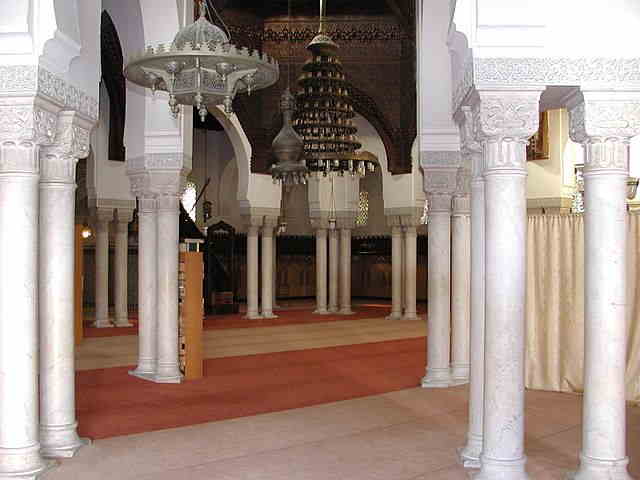
The Paris Great Mosque is one of the most impressive historic sites in the city of Paris. Built in 1926, the grand mosque stands as an iconic symbol of Islam in the heart of the city. It is located on the left bank of the River Seine, near the Latin Quarter and the Jardin des Plantes. The Paris Great Mosque was designed by the renowned architect, Michel Ecochard, who was also responsible for the renovation of the Grand Mosque of Damascus. The exterior of the building is a striking combination of traditional Islamic architecture and modern French design. The building is covered in intricate carvings, mosaics and geometric designs, while the minarets are topped with gold-leafed spires. Inside the mosque, visitors will find it full of richly decorated hallways, prayer rooms and galleries. The main prayer hall is a large, open space filled with intricate mosaics, colourful marble floors and a large dome. The mihrab, or prayer niche, is made of marble and adorned with intricate carvings and calligraphy. The Paris Great Mosque is a popular tourist attraction, and it is also used as a place of worship for members of the Islamic faith. The building is a testament to the beauty and diversity of Islamic architecture, and it stands as a symbol of the strong ties between France and the Islamic world.
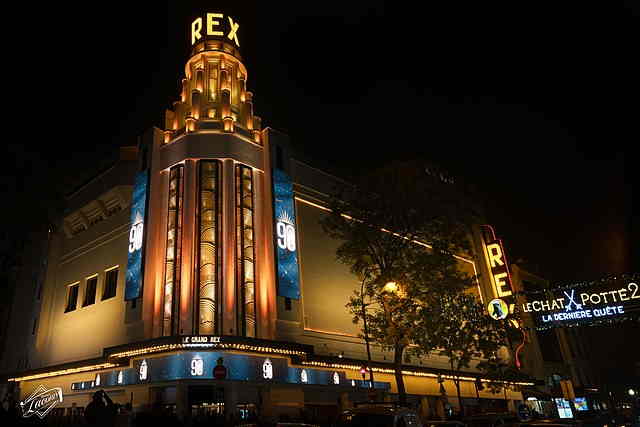
Le Grand Rex is one of the most iconic historic buildings in Paris. Located in the 2nd arrondissement of Paris, the theater was built in 1932 by the French architect Jacques Haussmann in the Art Deco style. Initially built as a movie theater, the building was designed to be a grandiose, luxurious venue with its vast lobby, ornate ceiling and white marble staircases. It was the most modern movie theater of its time, featuring the latest technological advances, such as air conditioning, an elaborate system of heating and lighting, and a revolutionary sound system. The theater has a unique façade, with a huge illuminated star on the roof and two large sculptures of lions at the entrance. It still retains its original Art Deco style, with the entrance, lobby and auditoriums all designed in this style. Inside the theater, there are two large auditoriums, the Grand Rex and the Petit Rex. The Grand Rex seats 2,700 and is the largest single-screen theater in Europe. The Petit Rex seats 1,100 and is used for small concerts and screenings.
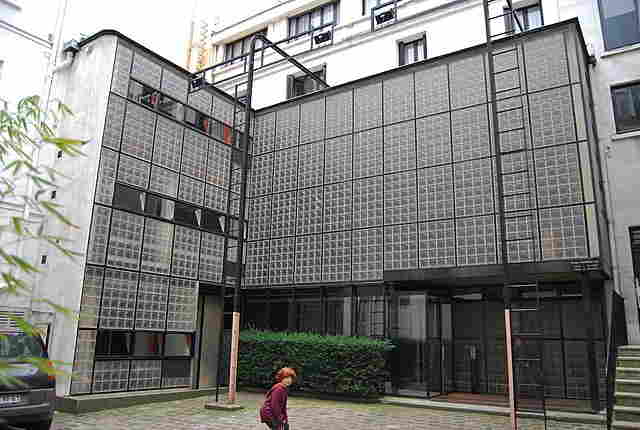
The Maison de Verre, located in the 3rd arrondissement of Paris, is a historic building that was designed in 1929 by architects Pierre Chareau and Bernard Bijvoet. It was one of the first examples of modern architecture in the city, and its innovative design makes it stand out among the other traditional buildings of Paris. The building features a steel frame and glass walls, as well as an interior courtyard, which was a pioneering feature at the time. The structure consists of two buildings that are connected by an interior bridge and a glass skylight on the roof. The Maison de Verre also stands out for its use of materials. The steel frame and glass walls allow for plenty of natural light to enter the building, creating a bright, airy interior. The interior courtyard is enclosed by steel and glass walls, and the roof features a metal skylight. Additionally, the building features an exposed staircase, which is made of metal, wood, and glass. The Maison de Verre is an important example of modern architecture in Paris. Its innovative design and use of materials makes it stand out among the other historic buildings in the city. Its unique design has made it a popular tourist destination, and it is often considered one of the most remarkable buildings in the city.

The Centre Pompidou is a historic building located in the heart of Paris, France. It was designed by architects Renzo Piano and Richard Rogers and opened in 1977. The building has become an iconic landmark of the city and a major tourist attraction. The Centre Pompidou is an example of high-tech architecture, characterized by its exposed steel structure and colorful external tubing. The exterior of the building is composed of four levels, each with a different purpose. The bottom level is a public plaza, while the top level houses the museum galleries. Inside, the Centre Pompidou houses a vast collection of modern art, including works by Picasso, Matisse, Duchamp, and many others. The building has been recognized with numerous awards, including the Prix de l'Urbanisme in 1977 and the Aga Khan Award for Architecture in 1980.
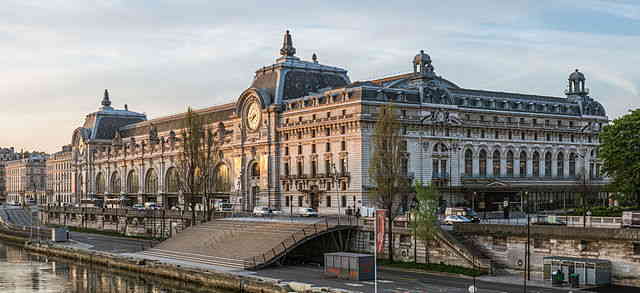
The Musée d’Orsay is one of the most iconic and important historic buildings in Paris. Located on the banks of the Seine, the museum is housed in the former Gare d’Orsay railway station, a Beaux-Arts architectural masterpiece built in the late 19th century. Designed in 1898 by architect Victor Laloux, the building is a testament to the elegance of the period, with its grand clock tower, ornate façade, and sweeping vistas of the river. The museum itself is home to a staggering collection of 19th-century French art, featuring works by the likes of Monet, Degas, and Renoir, as well as sculptures, decorative arts, and furniture. Visitors can explore the permanent collections, as well as special exhibitions, lectures, and educational programs, which bring the works to life. The Musée d’Orsay is also a testament to the history of Paris itself. During its lifetime, the building has served as a railway station, an art museum, a war refugee center, and a post office. From its grand façade to its unparalleled collection of masterpieces, this beautiful building is a testament to the city’s past, and a powerful reminder of its artistic legacy.
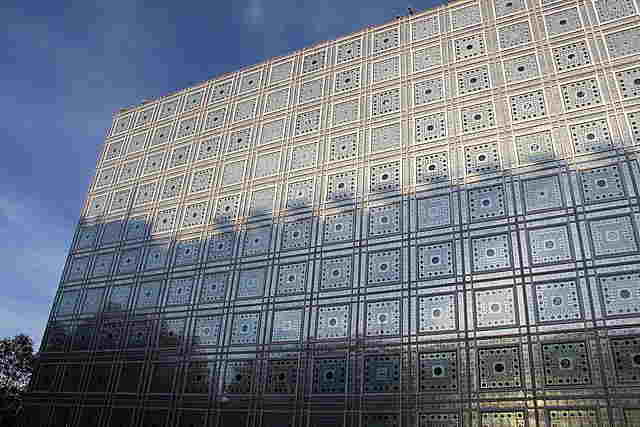
The Institut du Monde Arabe is located in the 5th arrondissement in Paris, France, just a few blocks from the Latin Quarter and the Seine River. It was designed by the late French architect Jean Nouvel in 1987. The building, which is composed of two distinct parts, was designed to symbolize the dialogue between East and West. The first section is composed of two conical towers, which are constructed of reinforced concrete and are covered in glass. The two towers are connected by a large glass-enclosed atrium. The second section is composed of two large rectangular buildings, which are constructed of stone with glass windows and a large central staircase. The building was designed to reflect the Islamic culture and the history of Arab-Islamic culture. The two towers are inspired by the minarets of mosques, while the two rectangular buildings represent the traditional architecture of the Arab world. The interior of the building is beautifully decorated with mosaics, Islamic art, and Arabic calligraphy. The Institute du Monde Arabe is a reminder of the rich culture and history of the Arab world and a symbol of cultural understanding and peace between East and West.
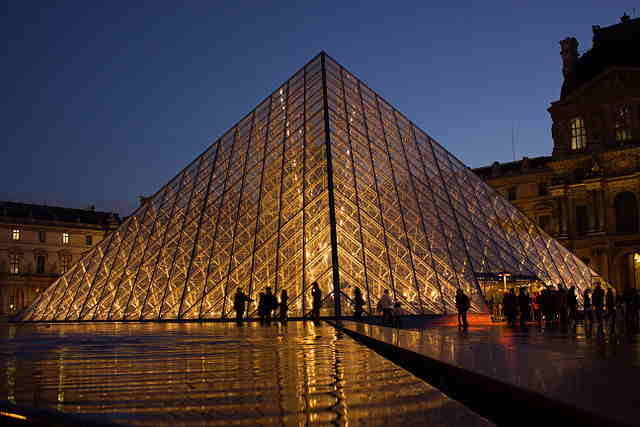
Pyramide, Le Grand Louvre is one of the most iconic historic buildings in Paris. Located in the world-famous Louvre Museum, it is the centerpiece of the museum’s vast collection of art and artifacts. Constructed in the late 1980s, Pyramide is an impressive modern structure that stands out among the other iconic landmarks in the city. Pyramide is made of glass and metal and stands approximately 21 meters high. It was designed by Chinese-American architect I.M. Pei to be the entrance to the Louvre Museum. The structure is composed of two triangular shapes that form the pyramid shape and its reflective surface. The main entrance to the museum is located at its base. Pyramide is an impressive sight to behold, particularly when illuminated at night. The structure’s design was inspired by the traditional pyramid shape of Ancient Egypt, and it is a fitting symbol of the Louvre’s vast collection of art and artifacts from around the world. The building has quickly become an iconic symbol of Paris and has been featured in numerous films and television shows.
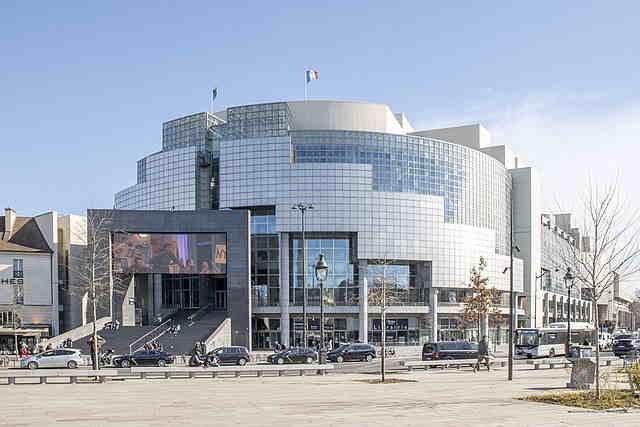
Opéra de la Bastille is an iconic historic building located in Paris, France. Built in the late 1980s, Opéra de la Bastille has become a beloved symbol of Paris and of French culture. Opéra de la Bastille is a modern opera house located in the Marais district of Paris. It was designed by the renowned architect Carlos Ott and contains a large auditorium with seating for over 2,700 people. The structure's striking design features a large glass dome, which is surrounded by four steel-clad walls, each of which is around forty feet high and nearly three hundred feet long. The entrance is a large archway, flanked by two smaller archways, leading into the theater. Opéra de la Bastille was built to replace the previous opera house, the Palais Garnier. It was built as part of a larger cultural district, which includes the Centre Georges-Pompidou and the Louvre Museum. This area has become a key part of Parisian life, providing the city with art, music, and culture.
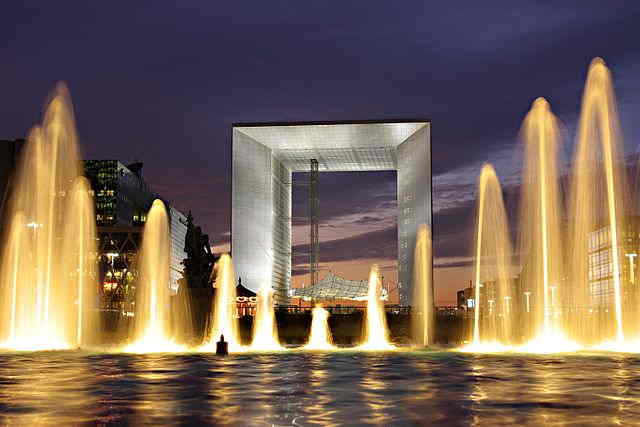
The La Grande Arche de la Défense is one of the most impressive and iconic historic buildings in Paris. It stands at the center of the city's business district, La Défense, and it is considered a modern symbol of Paris. Built in 1989, the Grande Arche is a cube-shaped building that is 110 meters tall and 108 meters wide. It was designed by Danish architect Johann Otto von Spreckelsen and its exterior is made of white marble and granite blocks. The Grande Arche is an important symbol of French modernism, and its design reflects the ideals of the French Republic. It was originally intended to commemorate the 200th anniversary of the French Revolution, although it is now considered a national symbol of democracy and freedom. The exterior of the Grande Arche is notable for its large glass windows, which allow natural light to flood the building. The interior is divided into three distinct sections, with the top two being open to the public. The bottom section is a museum, which houses a variety of exhibits related to French history and culture. The La Grande Arche de la Défense also serves as an important cultural and economic hub. It is home to the National Assembly, which is the lower house of the French Parliament, and it also houses a variety of businesses. The building is also the site of the annual Paris Marathon and the annual Paris Air Show.

Bibliothèque François-Mitterrand is one of the most iconic historic buildings in Paris. Located in the 13th arrondissement, the library is named after the late French president François Mitterrand. The building was designed by renowned architect Dominique Perrault and opened in 1996, becoming one of the largest public libraries in the world. The library is made up of four distinct glass towers, each containing a different section of the library. The tower of humanities, the tower of law, the tower of science and technology, and the tower of multimedia. The towers are connected by a glass-covered courtyard, which is a popular place to relax. The exterior of the building is composed of glass and steel, creating a modern and minimalist aesthetic.
The Maison Vegetale, also known as the Flower Tower, is a modern architectural landmark in Paris, located in the 15th arrondissement near the Eiffel Tower. It is a unique building in Paris, as it is a vertical garden in the form of a tower. The tower is made up of three separate levels, each with its own unique characteristics. The ground level is a small garden with a selection of plants and shrubs, while the second level is a restaurant area with a surrounding terrace. The third and highest level of the tower is a viewing platform with stunning views of the city. The Flower Tower is a modern take on a historic type of architecture in Paris, known as the hôtel particulier. These structures are usually large, palatial homes and often feature gardens and courtyards. The Flower Tower is an example of this style of architecture, with its garden and terrace, but instead of a home, it is a vertical garden. The Flower Tower is also an example of how Paris has evolved over time. While the city is known for its historic and iconic monuments, it has also become a hub of modern architecture. The Flower Tower is a prime example of this, as it is a unique and modern structure that stands out among the classical and historic buildings in the city.

The Quai Branly Museum is a must-see destination for anyone visiting Paris. Located in the heart of the city, the museum is a stunning example of French architecture and design, showcasing a wide variety of historic buildings from the city's past. The museum itself is housed in a large, imposing structure, whose façade features an intricate interplay of stone and glass that reflects the rich history of Paris. Inside, the museum is split into two wings, each of which houses a different part of the collection. The East Wing is devoted to the arts and cultures of Africa, Asia, Oceania, and the Americas, while the West Wing is dedicated to the art, culture, and history of France and Europe. The building itself was built in the late 19th century, and features a variety of French architectural styles, such as Second Empire, Beaux-Arts, and Art Nouveau. It was designed by Jean-Louis Pascal, a renowned French architect of the time, and has been carefully restored to its original grandeur. In addition to the museum itself, the grounds of the Quai Branly Museum feature a variety of historic buildings, including a chapel, a library, and a café. The chapel was built in the early 17th century, and is a stunning example of French Baroque architecture. It features an ornately decorated interior, and its walls are covered in frescoes depicting biblical stories. The library is housed in a building built in the mid-19th century, and is filled with thousands of books on various topics related to the museum's collections. The café, meanwhile, is housed in a building from the 18th century, and provides visitors with a place to sit and relax after exploring the museum.